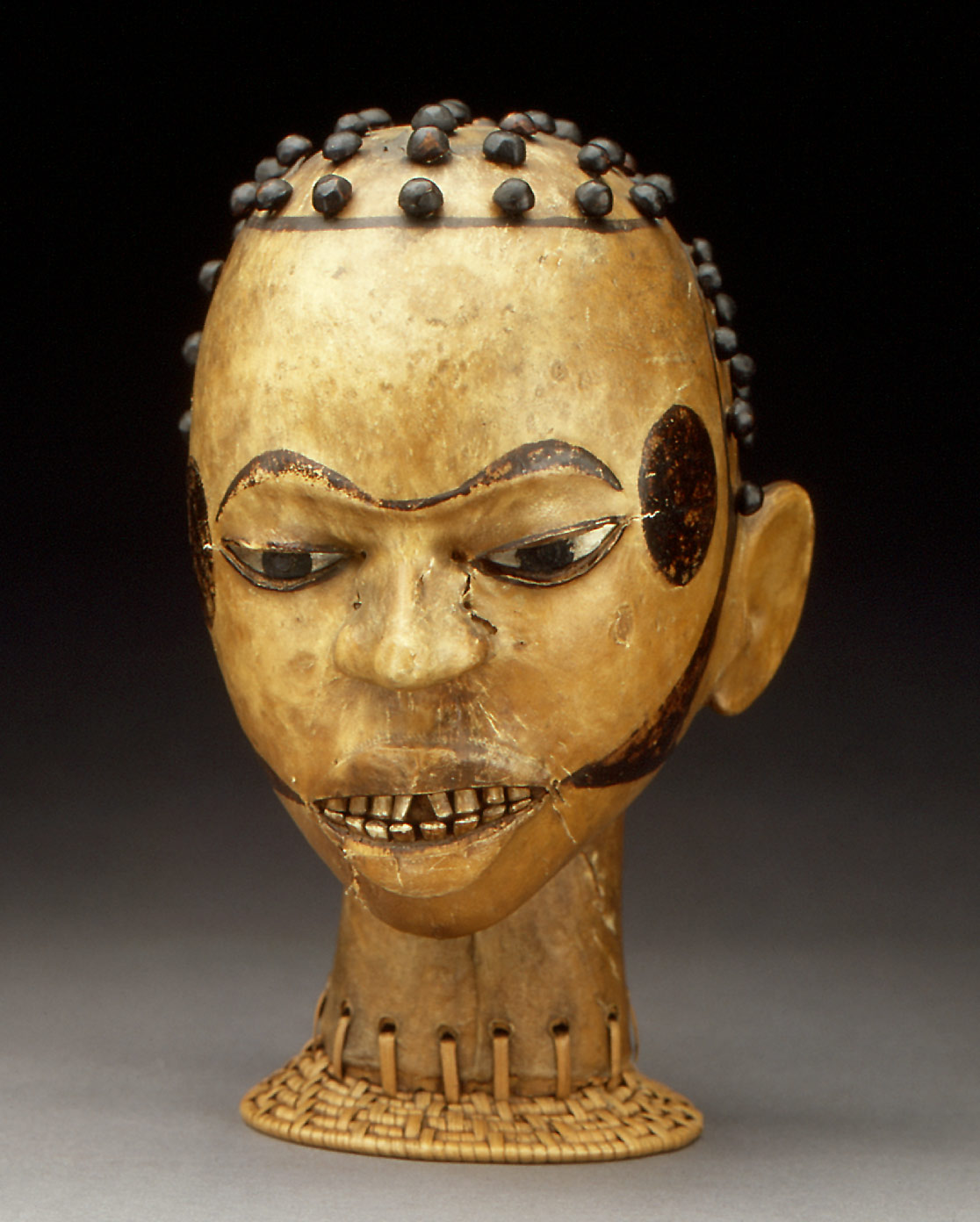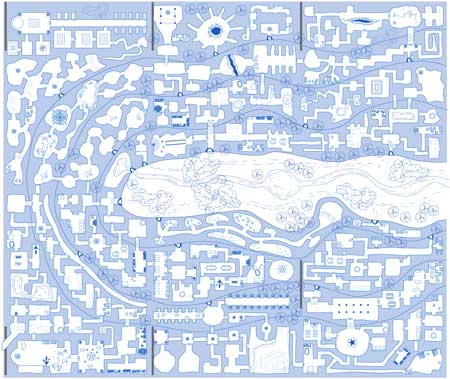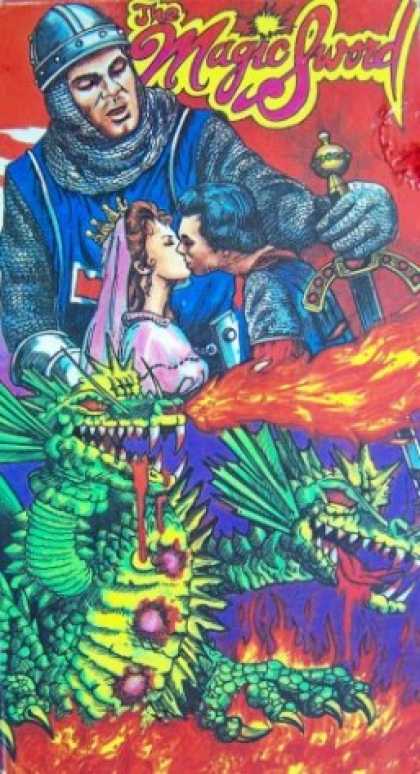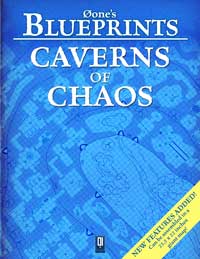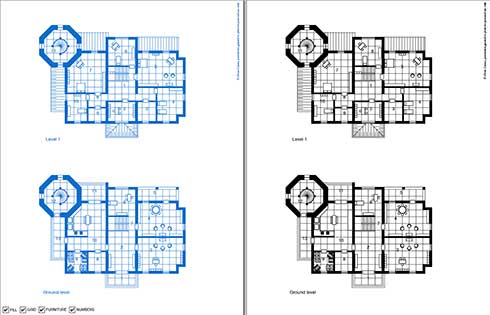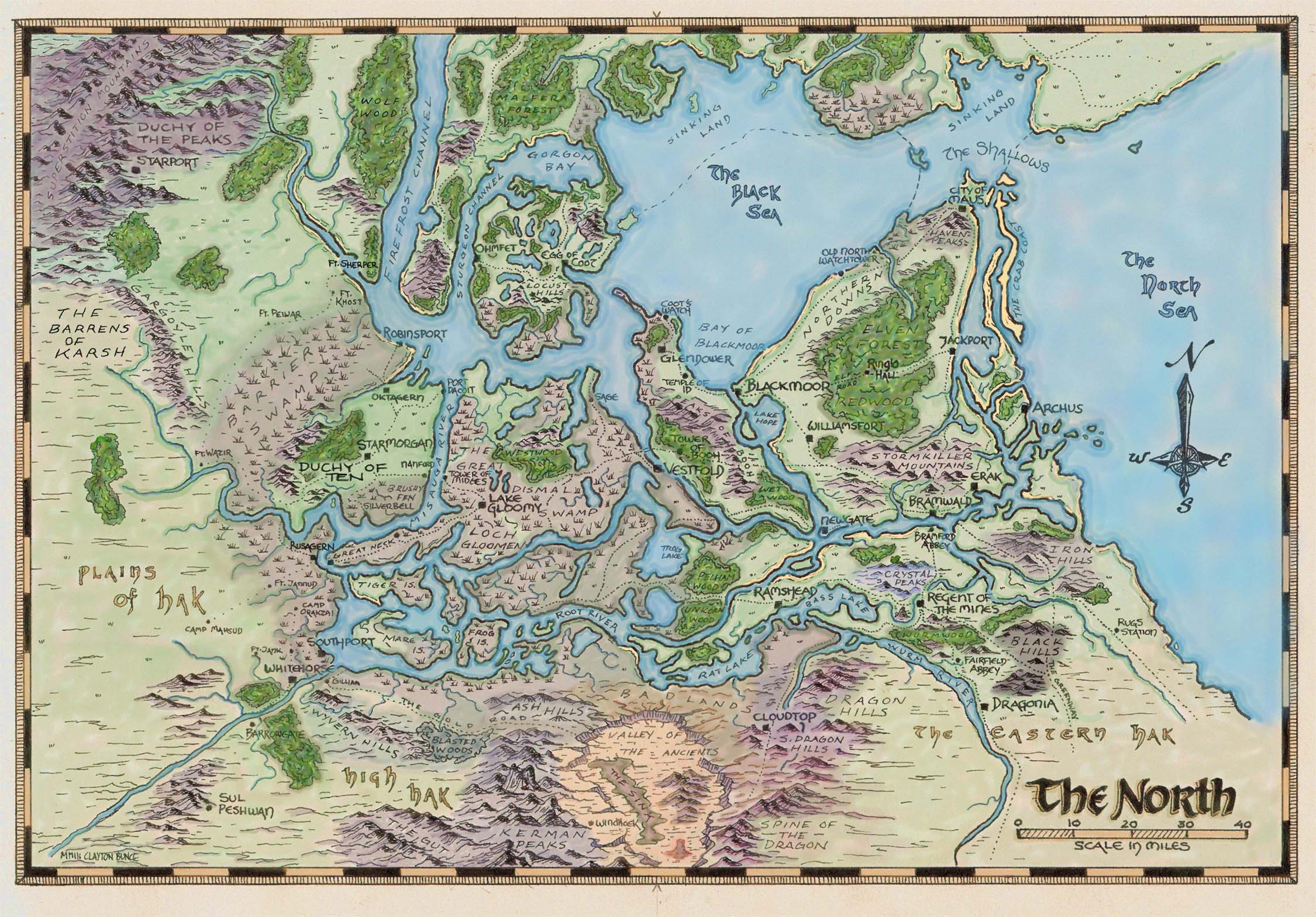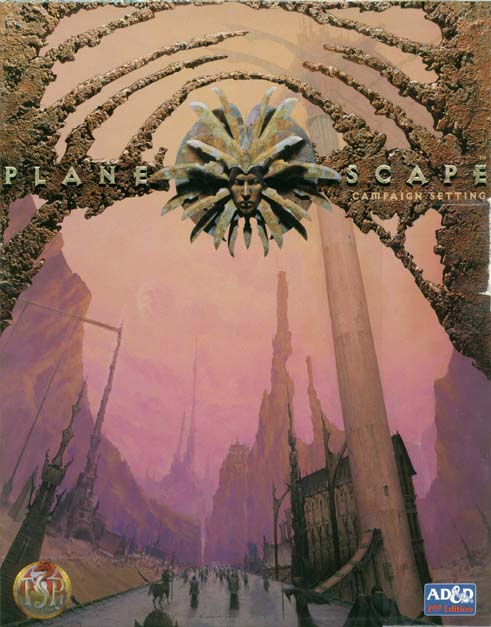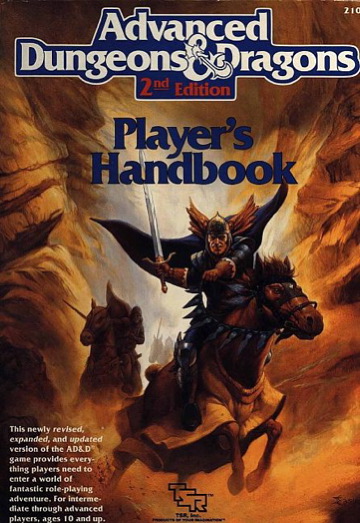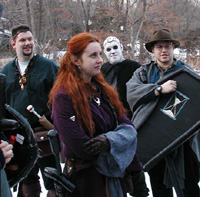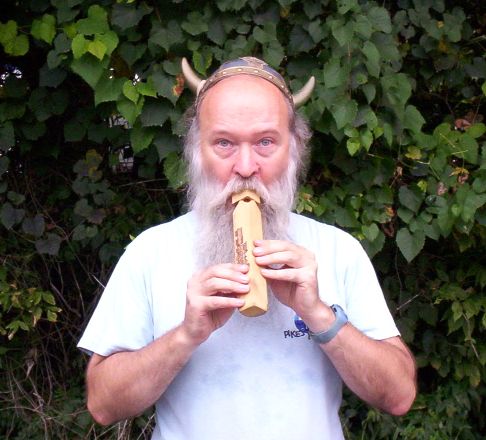
What would a good Sword & Sorcery setting be without an iconic tavern?
The Headless Harlot
The Harlot is a notorious tavern and inn of Dyvers the Wicked, located just off the central plaza of the Boulevard, on the very edge of The Groves. This modern wood and plaster, five-story structure abuts a one-story stone structure from an earlier age. The tavern is named for the ancient marble statue of a beautiful girl, the head long-since broken off, that stands by the main entrance, a doorway covered only by several ragged strips of stained leather. There are no windows on the ground floor, or the topmost fifth floor, but the middle three stories have windows with wooden shutters. A narrow alley on the right side of the building leads to a small service entrance around back, and a wide rusty grate in the mouth of the alley leads down into the city sewers. Past the service entrance is a rickety stable that can accomodate up to thirty mounts.
The main entrance opens into the wide, main tavern room, which has twenty long tables with benches, a long bar across the back of the room, and a low stage off to one side. The floor at the center of the room is clear of tables and chairs and is partitioned off by fifteen burning lamps set into iron staves. The tavern room is typically full at all hours of the day and night with raucous patrons, and after dark musicians fill the stage while the Harlot's dancing girls entertain from the central area.
The second floor features four large common rooms, and the third and fourth floors each feature 16 small rooms as well as a locked storeroom and a communal jakes that empties out into the alley below. The common rooms are filthy and often dangerous, and the third floor rooms are on the squalid side. The fourth floor rooms are kept somewhat clean and can be comfortable and well aired thanks to the height of the shuttered windows.
The abutting stone building is an ancient, but still functioning, bathhouse, and is accesible via a guarded door from the main tavern room.
The Staff
The Harlot is owned by Argus Blackarm(F6), a tall and emaciated ex-freebooter whose left arm, while fully functional, appears to be made of some sort of black stone, rumored to be the effect of an altercation with a foreign sorcerer. Argus is nearly always present during evening hours, frowning at the antics of his patrons, and acting as his own bouncer when the need arises. On the few occasions he becomes inebriated, he may be encouraged to regale the crowd with tales of his days stalking the shipping lanes of the Nyr Dyv.
The Harlot employs two bartenders, Grolf and Hubert (each F3), who despite sharing no blood ties are practically indestinguishable from one another. Nonetheless, they are highly, and sometimes violently, offended when someone attempts to call them over by the wrong name. Also in Argus's employ is a large and seemingly ever-revolving staff of wenches(typically Thief1), guards(F2), cooks, stableboys, and servants, all overseen by Argus's right-hand man, Jalister, a gregarious and perceptive priest of the Eye (C4).
Also on hand are Argus's seven slaves, the Harlot's popular and attractive dancers (T2). The most popular of these is Blissanda, a dark-eyed beauty from faraway Ket, who is never allowed to dance until Argus determines the Harlot has broken even for the night. A dozen or so lesser slaves service the bathhouse and upper rooms.
Mysteries and Rumors
The Bathhouse - This ancient structure features twohuge, ornate baths, one of which is hot, and the other cold. Both baths are fed from wide openings in the bottom that lead to some unknown source of water deep below the earth. Rumors persist of the occasional patron being dragged down into the deeps by an unkown agency. The waters of the baths are rumored to have odd effects on the bathers at times, from healing diseases, to other, less beneficial effects. Statues fill the alcoves lining the building's walls, some depicting ancient gods.
The Fifth Floor - Rumors abound about the mysterious fifth floor of the Harlot. As far as anyone can tell, there are no stairways leading up it, no public ones at any rate. Nonetheless, residents of the fourth floor rooms report odd noises, music, and thumps from above.
The Basement - Its a little-guarded secret that the Harlot's basement features a gambling parlor and brothel. Access to it is expensive, and strangers are seldom welcome. Though ostensibly owned by Argus, there are rumors of financial connections to Dyvers' underworld.
Prices
Common room, night - 5cp
Common room, week - 3sp
Private room, 3rd floor, night - 2sp
Private room, 3rd floor, week - 1gp
Private room, 4th floor, night - 5sp
Private room, 4th floor, week - 3gp
Bathhouse, daily access - 1sp
Bathhouse, slave attendant - 2sp/hour
Brothel, services rendered - 1gp/hour plus tip
Gambling room, daily access - 1gp
Stabling, night, plus feed - 1sp
Pilsner, pint - 1cp
Ale, pint - 2cp
Stout, pint - 3cp
Wine, rough, goblet - 3cp
Wine, good, goblet - 1sp
Wine, fine, goblet - 1gp
Liqour, fine, glass - 1gp
Whiskey, rough, jigger - 5cp
Hookah, 10 minutes - 1sp
Meal, rough (course bread, dubious stew) - 3cp
Meal, good (good bread, identifiable meat, cheese, soup) - 5cp
Meal, extravagant (5 course, rare and exotic foods) - 1gp




